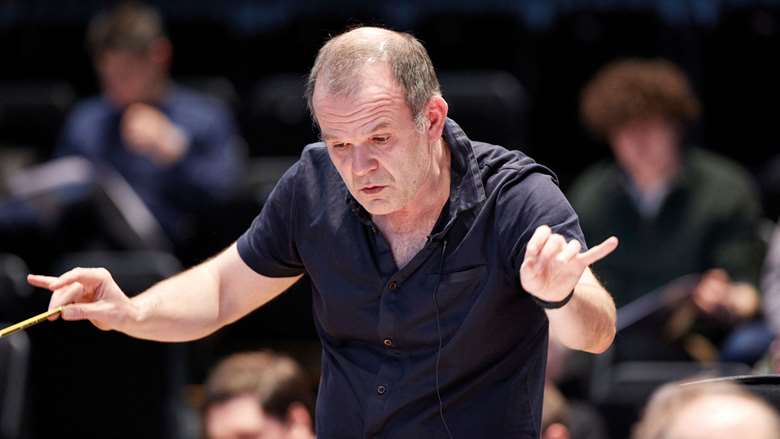Bruckner's Symphony No 4, an introduction by François-Xavier Roth
Monday, February 19, 2024
François-Xavier Roth on a work whose different – and very unique – versions inform one another

Bruckner’s music was not often performed in Paris when I was a child. I discovered my love for it from Pierre Boulez’s recording of the Eighth Symphony. I remember it was a shock. I admired Boulez very much – he was my hero – and his choice of this music was a big challenge and a big step. When he performed it, I could hear music that didn’t sound at all like the cliché that you sometimes get with Bruckner, and so it was a very interesting discovery.
Many people would say that the Fourth is Bruckner’s first really successful symphony, that it’s a gate at the entrance of the temple of symphonic history. And he did go on to develop in ways that you can’t imagine when you’re performing the Fourth. But I always see a kind of humility in his music. Every symphony starts with a sense of discovery, and each one is like a new planet, a new environment. For me, there is a sense of humanity, almost of fragility, in all of the symphonies.
We shouldn’t forget Bruckner’s craziness and his talent in inventing things that didn’t exist at the time
There is an element of balance in this symphony, which is important. For example, in the second movement, the first theme is marked Andante quasi allegretto and the second theme Adagio. These two main themes should have their own life, their own identity – but at the end there is a kind of equilibrium, a balancing of the ideas. The initial theme of the first movement is so strong but also so pure, simple and naive, like a horn melody you may hear in the forest or in the mountains. This is pure Bruckner in its sense of simplicity, but it also has a very deep sense of equilibrium.
I used to conduct the later [1880] version of the Fourth Symphony, but we decided to record our cycle of the symphonies with the Gürzenich Orchestra using the first versions. When I first discovered his music, I was not so interested in the details of the versions, but the more I worked with the music, the more I was excited to try to discover the purpose of the different versions. And what I discovered is that there is not one answer, there are many different answers. In the initial versions, you can find things that are not perfectly achieved, and this helps you to understand the later revisions.
In the first version of Symphony No 4, you have moments such as the end of the finale where he invents really crazy ideas. And I love that aspect of this version – the experimentation, the freedom. When I first looked at this score, I could immediately see why it was never performed in his lifetime. I think we shouldn’t forget his craziness and his talent in inventing things that didn’t exist at the time. The final version is much easier to conduct. It’s like when you buy a suit made to your measurements – it fits completely. The earlier version is like a suit for an alien. It has maladresse, as we say in French. But it has a charm, a flow, an élan – a daring élan. Certainly, the later version is much easier to perform, but I think to be able to perform it well you need not only to know the first one but also to perform it!
The Gürzenich Orchestra is a very old one that has its roots in the Rhineland, in Schumann, in Beethoven, and you can feel it in their playing of the music. For me, as a conductor, it’s always important to study and rehearse a piece knowing where it comes from, and the work we did with Schumann, we also used for Bruckner. The quality of the sound is not the main thing. For sure, it’s important, but it’s not everything. I would say that I’m more focused on the progression of the harmony, how you structure a phrase, the way to start a sentence and the way to finish it. And this comes from Baroque music – from Buxtehude, Bach – and the Classical era. Bruckner doesn’t need to write the phrasing, because the musicians know it. In the first and fourth movements of Symphony No 4, there’s a tradition of conductors playing the second theme much slower. But in his scores Bruckner very rarely indicates this. There are some symphonies where he specifies it, but most of the time he doesn’t, and I think there’s really no reason to exaggerate the two tempos in the same movement. This is something that you can hear in the version I recorded.
I have the feeling that we are collectively only at the beginning of something, that there is a lot more to discover in Bruckner’s music. There are no other composers who have the same kind of trajectory in our collective culture. This is music that is increasingly becoming part of our world, of our culture.
Interview by Christian Hoskins
This article originally appeared in the January 2024 issue of Gramophone. Never miss an issue of the world's leading classical music magazine – subscribe today

















